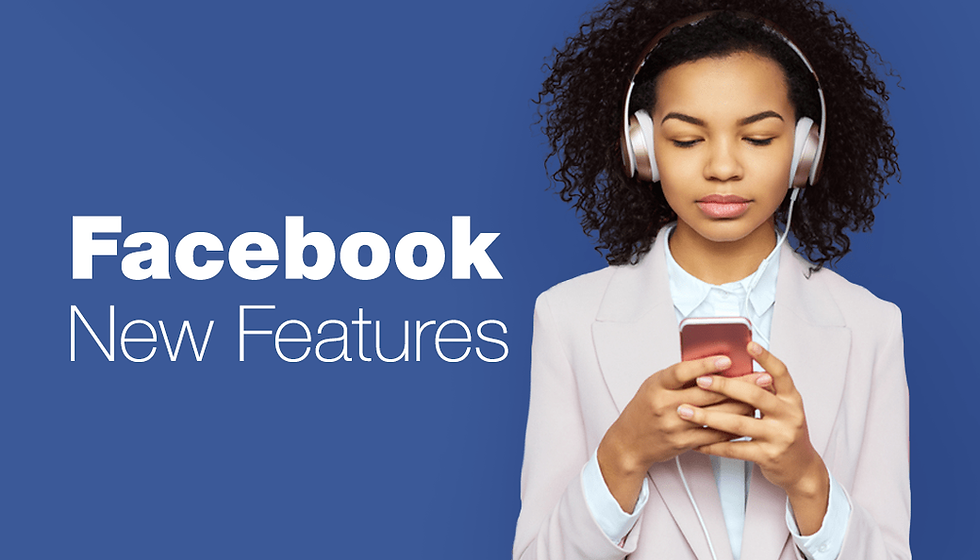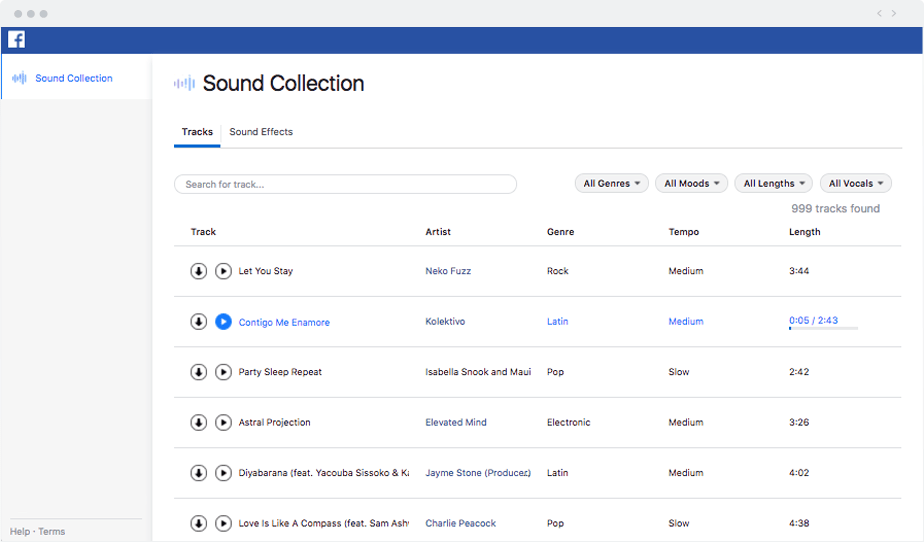
You think you know Facebook like the back of your hand – as you should. But to what extent do you really? Just like your favorite website builder, the number 1 social media channel has been through and will continue to undergo a lot of major changes, ones that can directly impact the way you publish content. Mastering these features, tools and updates will give you that competitive edge that you need in order to stand out.
Luckily, you won’t have to read the entire tech press. We know you’re pretty busy, so to ease your life, we’ve mashed up the essential new Facebook updates you have to know. Just make sure you've created your Facebook account and we'll get started.
A push for authenticity and community
The News Feed has seen a handful of changes lately, particularly in the way that content is delivered to you. This shift comes from a deep concern from Facebook: the platform was originally built to allow the sharing of intimate moments and personal life-related updates. But the social channel’s powerful advertising capabilities has led companies to progressively take over. Because it might impact the traffic and satisfaction of its users, Facebook is now heading back to its roots: “helping us to connect with each other”, as Mark Zuckerberg stated in a recent Facebook (what else?) post.
This careful consideration of the users’ well-being led to the first change: prioritizing posts from friends and family instead of brands, businesses and media. Concretely, it means that the posts from your “friends” will appear first in your News Feed – even before the cute, viral videos of cats we’ve all grown accustomed to seeing. This urge for authenticity also explains another recent announcement: the algorithm will be changed to give priority to trustworthy news sources and local news publishers. Local news prioritization will start first in the US and expand to other countries throughout 2018. If you follow a local publication, expect to see its stories more often, or at least, higher up in your feed.
“Local news helps build community — both on and offline. It’s an important part of making sure the time we all spend on Facebook is valuable.” – Mark Zuckerberg
Facebook penalizes clickbait and engagement bait
Anyone that’s ever logged into Facebook has more than likely ran into an ‘engagement bait’ post of some sort. What does this barbarous word mean? It simply refers to the posts that explicitly ask you to tag someone, vote, comment or react – in one word: engage. Because this practice mainly benefits the publisher (who’ll get a better reach thanks to the high engagement), and not the users, Facebook recently decided to use its machine learning immense capabilities to automatically spot this type of content, and make it less visible on the News Feed. This evolution is the natural next step, after the decision earlier in 2017 to penalize the providers of clickbait content – which are posts that would use any trick, even the most deceitful one, in order to attract people and click on a link.
These changes have to be interpreted in attempts to make sure your time on the social network is well spent and that news sources that are put in front of you are credible. Sure, we all like scrolling through a long list of trendy content, but prioritizing news from more trustworthy sources and stories from your friends and family doesn’t sound like a bad thing. What does this mean for you, if you run a page on Facebook? Given the focus on trust, it’s recommended to publish really unique and valuable content (like genuine tips, interesting stories, interviews, etc.). Since authenticy is also an important factor, start experimenting new formats presenting you and your brand in a transparent and fun way. For example, we at Wix love Facebook Lives – something that you can easily experiment to show the inner workings of what you do and even host a Q&A while you’re at it. Now, that’s trustworthy.
Facebook introduces a free sound collection
Facebook is looking to hone-in on its video creators, and offer tools to help them along the way. Not only did it release a dedicated mobile application, its latest gift to the community is the Sound Collection. Which is just what you think it is: a base of free-to-use music and sound effects that can be used on Facebook videos. While still in its infancy, offering roughly around 1,000 music tracks and 1,500 effects, it’s a welcomed addition that we’re sure all video makers can benefitfrom.
It’s hard not to draw parallels with YouTube’s long-running and fleshed out Creator Studio. YouTube has quite the head start in terms of lifespan and content availability, but it’s fairly clear that Facebook is taking its community seriously and we can expect its audio collection and other features to become more robust sooner rather than later. Videos are a tremendous weapon in the marketing arsenal of SMB owners, and Facebook now makes life considerably easier by offering free sounds to complete them.

Think “mobile first” when uploading photos
Looks like the discrimination against portrait-sized images is (finally) a thing of the past. For years, users were told to upload mostly landscape photos. But considering how much traffic comes from mobile devices today, it’s only natural that Facebook’s algorithm would adapt accordingly. Vertical images (or ‘Portrait images’) are not cropped anymore, and appear in the feed in their entire glory. Since they occupy such a large space on the screen, they naturally attract more views and engagements than their horizontal peers. Providing content that’s big and easy to consume can keep viewers on your page for longer – so don’t think twice, and start uploading more vertical photos on Facebook!

In any case, and because it’s always useful to have them somewhere, here are the recommended images sizes for posting on Facebook in 2018:
Cover photo: 828px in width by 310px in height;
Profile picture: 180px by 180px;
Image post: 1200px by 1200px;
Preview image: 1200px by 627px.
Everybody can contribute to Facebook’s augmented reality (AR)
AR, or Augmented Reality, is everywhere these days. From games like Pokemon Go! to filters you can overlay on your face in many social media apps, it has received enough attention for the likes of Google, Apple and Facebook to create their very own platforms for it. Facebook’s dedicated platform, the AR Studio, was launch early last year in a closed beta of 2,000 developers and brands. Now, the platform has been opened up to all developers to take advantage of. Unless you’re a 3D artist or developer, you more than likely have little use for the platform, but that doesn’t mean you won’t be able to enjoy it. With the tools available to all developers now, you’ll see more filters and effects within the built-in Facebook camera in the future. By the way: if you didn’t see the Game of Thrones filter to turn yourself into the Night King – you missed out!
Messenger receives a facelift
Of course, it’s not all dramatic enhancements at Facebook, as some of its existing products will see more of an evolution rather than a stark change. One such product is Messenger.
To say Messenger is feature-rich would be an understatement, and perhaps this is why it’s set to receive a more streamlined overhaul this year. What’s in store? Nothing definite, but the company already announced working on improved Facebook features for group messaging, a simplified app, and new ways to turn Messenger into a powerful customer service platform. Finally, as visual messaging is at an all time high, and with over 500 billion emojis and 18 billion GIFs sent in 2017, Messenger is set to become even better equipped for this type of communication. It will be interesting to see what Facebook plans to bring to the table to improve our digital hieroglyphs.
With so many moving parts in the world’s most popular social network, we’re more than certain than ever that 2018 will bring us more changes.